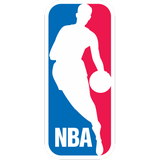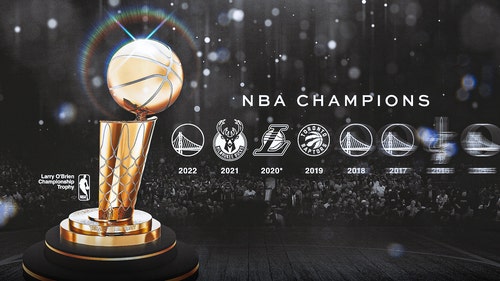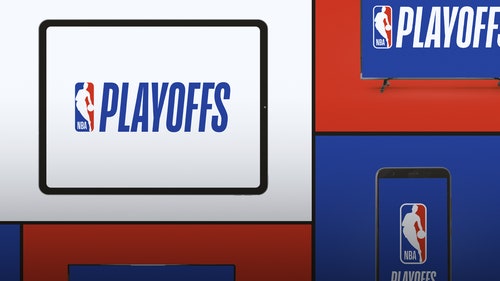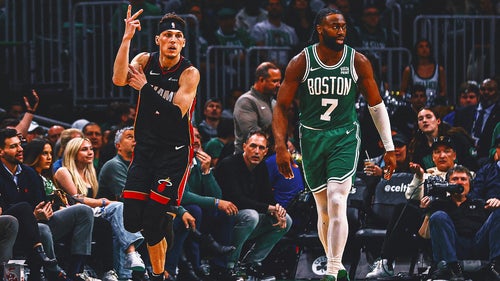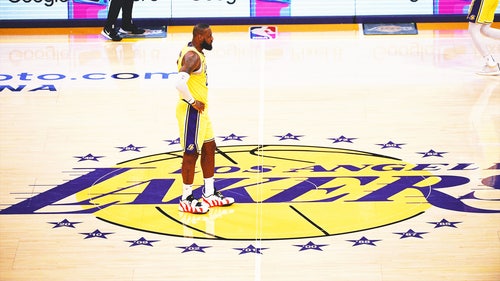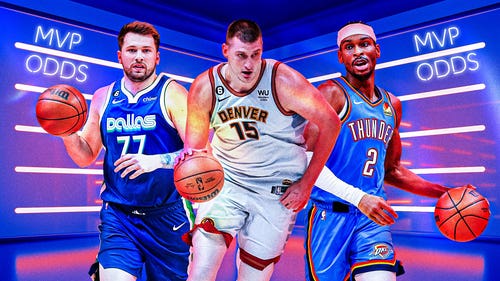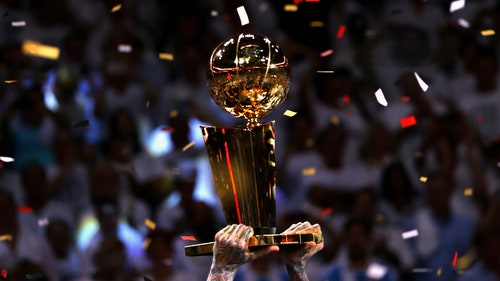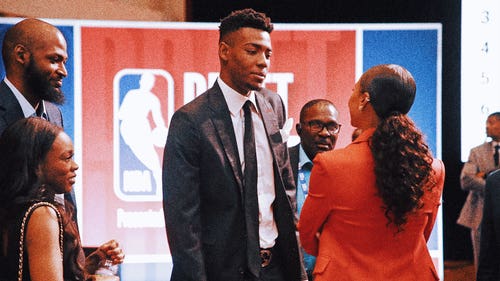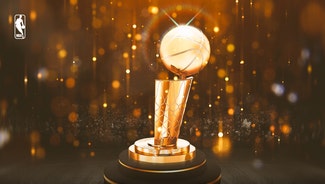
Portland Trail Blazers: 5 options for pick No. 20 in 2017 NBA Draft

March 17, 2017; Sacramento, CA, USA; Creighton Bluejays center Justin Patton (23) during the second half in the first round of the 2017 NCAA Tournament against the Rhode Island Rams at Golden 1 Center. The Rams won 84-72. Mandatory Credit: Kyle Terada-USA TODAY Sports
If the Portland Trail Blazers keep the 20th pick in the 2017 NBA Draft, here's a look at five prospects they should be considering.
The Portland Trail Blazers have three first round picks in the 2017 NBA Draft. Anything is possible.
The Blazers hold the No. 15, No. 20 and No. 26 overall picks in the June 22 draft. Conventional wisdom is that the team will not keep all three. According to The Vertical, Portland currently has $143 million tied up in contracts for 2017-18. That's $21 million above the projected tax threshold.
It's hard to fathom the team taking on more contracts without unloading some financial stress. However, there is value in this draft if Portland keeps any or all of its picks.
The Blazers received the No. 20 pick via a trade. On Feb. 13, Portland sent Mason Plumlee and a 2018 second round pick to the Denver Nuggets. In exchange, they received Jusuf Nurkic and this pick.
The pick originally belonged to the Memphis Grizzlies. On Jan. 22, 2013, the Grizzlies traded the pick, Wayne Ellington, Marreese Speights, and Josh Selby to the Cleveland Cavaliers for Jon Leuer. On Jan. 7, 2015, the Cavaliers sent the pick to Denver for Timofey Mozgov and two second round picks.
In the Blazers' NBA.com draft profile, Scott Howard-Cooper says that frontcourt offense is one of Portland's most pressing needs. The Blazers didn't receive consistent scoring production at center and power forward until Nurkic's arrival.
Nurkic contributed 15.2 points and 10.4 rebounds per game on 50.8 percent shooting in 20 appearances. The remaining four bigs on the roster – Al-Farouq Aminu, Meyers Leonard, Noah Vonleh, and Ed Davis – combined to average 22.8 points and 21.1 rebounds per game on 42.5 percent shooting.
In the same profile, Shaun Powell adds that defense was also a problem. The Trail Blazers finished the season 21st in defensive rating. Portland can address both issues with their top two picks in the draft. They could pick up a stretch big with one pick and a rim protector with the other.
We've already covered five strong candidates that could be available at the No. 15 pick. This article will take a look at five options that the Blazers should consider at No. 20.
5. Isaiah Hartenstein, PF/C, Germany
Blazer fans that want to push the reset button on Meyers Leonard's development will be interested in Isaiah Hartenstein.
Hartenstein is a quasi-local product. He was born and spent his early years in Eugene, Oregon. His father is Florian Hartenstein, a former Oregon Duck from Germany that played over a decade professionally in his homeland. Isaiah, his mother and his sister moved there when he was 10 to join his father.
Hartenstein enters the NBA Draft after spending a season with Lithuanian club BC Zalgiris. The team plays in Lithuania's top league while also participating in the Euroleague. Hartenstein has played in 33 total games (five in the Euroleague), made made starts, and is averaging 11.5 minutes per game.
He could also see a little more run before the draft. Zalgiris is currently competing in the final round of the Lithuanian league championship.
Hartenstein is 7'1″ and has the tools to become a stretch big in the NBA. He is nimble on his feet, a strong rebounder, an astute passer and has a good shooting form. According to RealGM, Hartenstein averages 15.7 points, 11.4 rebounds and 2.2 assists per 40 minutes, adjusted for pace. He's also a very impactful defender, averaging 2.9 steals and 1.8 steals per adjusted 40.
However, Hartenstein still has a ways to develop. His outside shot is still a work in progress, despite his good form. He is currently shooting 26.7 percent from three. Hartenstein is also mistake-prone in his young age. He is averaging 4.0 turnovers and 7.9 fouls per 40 minutes. Lastly, he doesn't play up to his height due to bad posture. Instead, he is hunched over when he plays.
The Blazers could draft Hartenstein and keep him in Lithuania for another year or two. This would save money this season and allow him to keep developing in a high-level pro environment. On the other hand, he could also come over right away and begin the developing in-house. This would allow him to get acclimated to Portland's systems and develop faster.
Either way, adding Isaiah Hartenstein would be a long-term step toward adding frontcourt offense to the Blazers roster.

Feb 9, 2017; Durham, NC, USA; Duke Blue Devils forward Harry Giles (1) reacts after dunking the ball against the North Carolina Tar Heels in the second half of their game at Cameron Indoor Stadium. Mandatory Credit: Mark Dolejs-USA TODAY Sports
4. Harry Giles, PF/C, Duke
It's admittedly odd to suggest a franchise with a history of injury-prone big men should draft an injury-prone big man. However, Harry Giles could be a high-risk, high-reward late first round selection. With three first round picks, it wouldn't hurt Portland to take a chance with one of them.
Giles comes with a high motor, athleticism and defensive versatility right out of the box. That motor keeps him active on both sides of the ball. He's able to attack at the rim whether he's on the block or running in transition. According to The Ringer's draft guide, Giles shot 64.6 percent at the basket. The Ringer and Draft Express point out that he also has the potential to extend his shooting range over time.
His motor and athleticism also allowed him to rebound proficiently in the limited playing time he received. Giles averaged 3.8 rebounds in 11.5 minutes per game for Duke. However, that expands to 13.5 rebounds per 40 minutes, pace adjusted. Specifically, 8.0 defensive and 5.5 offensive boards.
Giles is also good at defending thanks to his footwork and defensive IQ. Those talents allow him to defend power forwards and centers all the way out to the perimeter. College Basketball Reference notes that Giles came away with a 96.6 defensive rating in 2016-17. That was the best mark among the eight Blue Devils that averaged at least 10 minutes per game for Duke.
Giles isn't much of a playmaker, averaging only 1.2 assists per 40 minutes, pace adjusted. His high motor is normally great, but can get him into trouble with defensive mistakes and fouls.
Also, his injury history too extensive too overlook. In 2013, Giles tore his left ACL, MCL, and meniscus during the FIBA Under-16 World Championships as member of Team USA. In 2015, while playing for Oak Hill Academy, he tore his right ACL during the season opener. Then, in October 2016, he underwent left knee surgery.
Giles made his Duke debut on Dec. 19, 2016 against Tennessee State. He spent the season wearing a black brace on his left knee when he played. However, even with all the contact in the paint, Giles made it through the remainder of the season without incident.
Harry Giles is certainly a risky pick for Portland to make. However, he could develop into a dangerous inside and defensive threat if he stays relatively healthy for an extended amount of time.

Feb 4, 2017; Gainesville, FL, USA; Kentucky Wildcats forward Edrice Adebayo (3) against the Florida Gators during the first half at Exactech Arena at the Stephen C. O'Connell Center. Mandatory Credit: Kim Klement-USA TODAY Sports
3. Edrice "Bam" Adebayo, C, Kentucky
Bam Adebayo is probably in the best shape out of everybody on this list. Draft Express' "Strengths" video breakdown for Adebayo indicates the 6'9″, 243-pound center has only 5.2 percent body fat.
Because of his size and muscle, Adebayo is a good rebounder. He averaged 10.0 boards per 40 minutes, pace adjusted. Adebayo is also a great leaper that loves to dunk and block. He averaged 1.9 rejections per 40.
Adebayo also has good footwork that allows him to defend all over the floor. He came away with a 95.7 defensive rating in 2016-17. That was fourth-best among the eight Kentucky Wildcats that played in 36 or more games. The Wildcats were 32nd in the nation in defensive rating.
However, for all of his athleticism, Adebayo's offensive game is limited. According to The Ringer, 87 percent of his shots came at the basket. He converted on 64 percent of those shots. He shot 32.4 percent on his shots when he wandered outside of the restricted area.
Adebayo also has some consistency issues. While he's capable of making big plays on defense, he also tends to be aloof at certain points. He occasionally made low IQ defensive decisions like misreading a pick-and-roll situation or blowing an assignment completely.
But if he were to come to Portland and buy into the system, he could fill the role that Festus Ezeli was supposed to play in 2016-17. Bam Adebayo would bring defense, rebounding and post scoring to a Blazers team that needs more of it.
2. Anzejs Pasecniks, C, Latvia
Anzejs Pasecniks' entry into the draft comes along with a recent wave of Latvian basketball players. The NBA has already seen Andris Biedrins, Davis Bertans and Kristaps Porzingis. But a new class is coming, with Pasecniks joining two other Latvians on the DraftExpress Top 100.
First and foremost, Pasecniks is tall, standing at 7'2″. His wingspan has not been measured. However, the eye test would indicate that his arms are also long.
He's also surprisingly mobile for a player of his size. This mobility allows him to run the floor easily defend bigs all over the court.
Pasecniks is a scorer, which makes him a nightmare for opposing centers. He's scoring 65.8 percent from the field in 50 total games with CB Gran Canaria this season. The 65.7 percent Pasecniks shot in 35 Spanish league games was fifth-best in Liga ACB.
He is currently most comfortable with scoring at the basket. Pasecniks takes 81.1 percent of his shots from at the rim and makes 73.3 percent of them. But he also has shooting touch from midrange and outside as well. He only averages 0.9 three-pointers per 40 minutes, but is shooting 44.4 percent from beyond the arc. Increasing his perimeter shooting volume would make him a potent offensive weapon. It would also make him similar to his fellow countryman Porzingis.
More from Hoops Habit
On the downside, Pasecniks is tall but thin, weighing only 229 pounds. That lack of weight keeps him from rebounding as much as you would expect a 7'2″ center to. He averages only 7.7 rebounds per 40 minutes, pace adjusted. His lankiness leads him to avoid contact when he attacks the basket.
Pasecniks also struggles with passing and playmaking, averaging just 0.7 assists per 40 minutes. Lastly, even though he's a mobile defender, he struggles with certain concepts of pick-and-roll defense.
Like Isaiah Hartenstein, Pasecniks could be a draft-and-stash option if they want to save money. He has the tools to be a two-way stretch center for a Blazers team that needs inside scoring and size. However, there are a number of concepts that Anzejs Pasecniks needs to work on before he receives a major role in Portland.

Feb 4, 2017; Omaha, NE, USA; Creighton Bluejays center Justin Patton (23) reaches for a ball against the Xavier Musketeers at CenturyLink Center Omaha. Xavier defeated Creighton 82-80. Mandatory Credit: Steven Branscombe-USA TODAY Sports
1. Justin Patton, C, Creighton
If the Portland Trail Blazers choose to use the No. 20 pick in this draft, Justin Patton would be one of the best options on the board.
The 2017 Big East Rookie of the Year averaged 12.9 points, 6.2 rebounds, 1.2 assists and 1.4 blocks per game for his hometown Creighton Bluejays. Patton, at 6'11" and 229 pounds, is another center with a high motor. That motor allows him to run in transition, dunk and catch lobs, and protect the rim.
Patton showed at Creighton that he was good at attacking the basket. The Ringer indicates he shot 76.4 percent under the hoop. However, he also showed flashes of an extended offensive game. Patton shot 35.3 percent from midrange went 8-for-15 from three.
On the downside, there are some parts of his game that need some polish. His rebounding could improve. At this juncture, even though he averages 9.5 per 40 minutes, he tends to get lost in traffic or moved out of the way.
Patton also has some stance issues on both sides of the ball. According to Draft Express' "Weaknesses" video breakdown, he stands a bit too upright when defending the perimeter. On offense, physical defenders are able to knock him off balance when he's posting up.
His emotions are also going to be something he'll have to work on in the NBA. When the game speeds up, he tends to do too much and make things worse. Patton also averaged 4.2 fouls per 40 minutes in 2016-17.
But those issues can be cleared up in the right system. Patton would start off as a great energy player in the backup center spot behind Nurkic. Over time, the team can develop his game so that he could be a multi-dimensional big man. Eventually, Patton could be a floor-stretching scorer and a formidable rim protector that can also defend on the perimeter.
Justin Patton's mix of talent and potential makes him a coveted prospect. Multiple mock drafts have him going in the mid- to late-teens. If Patton happens to fall to No. 20, the Portland Trail Blazers would go a long way toward fulfilling their frontcourt needs by selecting him.
